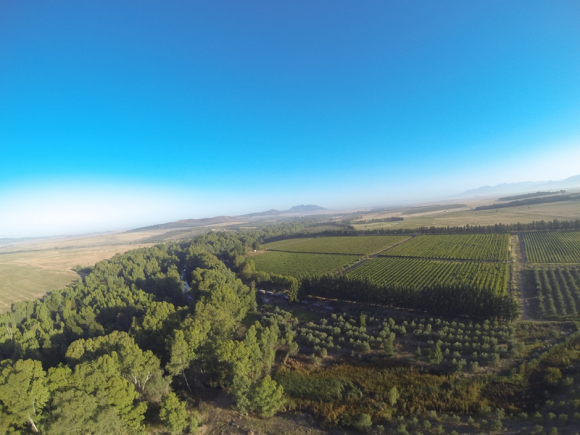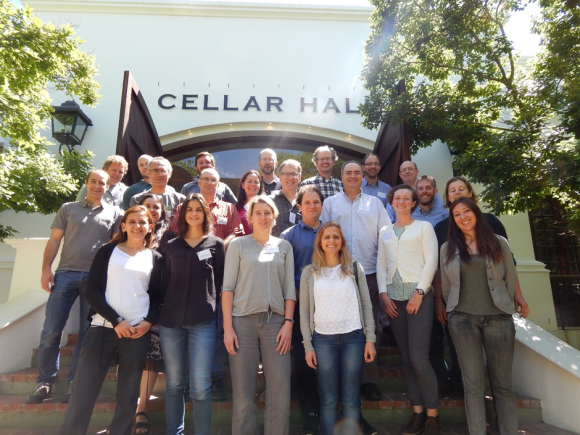10 December 2019 | By Heidi Hirsch

River red gum, the eucalypt species with the greatest distribution and impact as an invader in South Africa, is a poster child example of a conflict-generating species since it has many uses (e.g. important pollen and nectar source for honey bees, roosting and nesting habitat for raptors, wood, etc.) but also many negative impacts (e.g. alteration of river structure, replacement of native riparian vegetation, etc.). However, little is known about the history of the species in South Africa, its distribution, abundance, susceptibility to pests and diseases, impacts in various landscapes as well as people’s perception of its positive and negative effects. The lack of such a holistic overview clearly hampers the development of effective and sustainable management options for such an important invasive species.
The research team aimed to bridge this knowledge gap by compiling a detailed dossier on river red gum to highlight information on the species’ introduction and planting history, current distribution in South Africa, its value for commercial forestry, impacts as invader, associated pests and pathogens, people’s perception of the species and conflicts of interest, management and restoration options, knowledge gaps and further research needs. The outcome of this study is important for improving the management approaches for river red gum in South Africa. It will also serve as a blueprint for the types of information needed for developing objective management strategies for non-native tree species in other parts of the world.
“In compiling this review”, Hirsch says, “our team was able to define the knowns and unknowns of this iconic tree in South Africa. We hope that this information will pave the way for the development of a national strategy for the management of the tree in all parts of its distribution in the country.” She adds, “Our work also shows that it is important to move away from ‘demonizing’ certain species per se by considering not only their impacts but also benefits and by seeking constructive engagement with different stakeholder groups.”
Further reads:
Hirsch, H., Allsopp, M., Canavan, S., Cheek, M., Geerts, S., Geldenhuys, C.J., Harding, G., Hurley, B.P., Jones, W., Keet, J.-H., Klein, H., Ruwanza, S., van Wilgen, B.W., Wingfield, M.J., Richardson, D.M. (2019) Eucalyptus camaldulensis in South Africa – past, present, future. Transactions of the Royal Society of South Africa. DOI: 10.1080/0035919X.2019.1669732
Workshop on river red gum in South Africa hosted by the C·I·B in March 2018:
http://academic.sun.ac.za/cib/news/2018/0323_ws_red_gum_status.htm
The Conversation
https://theconversation.com/south-africa-needs-a-fresh-approach-to-managing-invasive-trees-like-eucalyptus-126777


